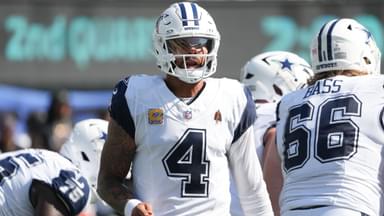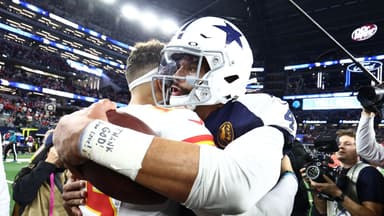The NFL transitioned to a 17-game season just four years ago, but discussions are already underway about adding another game and moving to an 18-game format. What was once speculation is now beginning to feel like an inevitable reality. While players technically have until 2030 to agree to such a change, or risk a lockout and forfeited game checks, serious negotiations won’t begin until 2026.
Advertisement
Even then, the earliest the league could implement an 18-game schedule would be in 2028. Not everyone is on board, though. Chiefs quarterback and face of the NFL, Patrick Mahomes, isn’t enthusiastic about the prospect of playing 18 games. If the league does expand the season, he wants it to come with a second bye week for players.
However, the NFL isn’t warm to that proposal. Team owners are reportedly pushing for the 18-game schedule to retain the current structure, with just one bye week. Why the reluctance to add a second bye? According to NFL insider Mike Florio, it has everything to do with the league’s long-term scheduling vision. The NFL is eyeing Presidents Day weekend as the ideal slot for the Super Bowl and plans to start the season the weekend after Labor Day. Adding a second bye would force the league to begin the season on Labor Day weekend—something they haven’t done since 2001 and are reluctant to revisit.
“I am all for that, but I don’t think the league is. I think the league’s position is going to be 18 games, one bye. And here’s why. They got this fascination, as do many fans, and this is why the league is embracing it. President’s Day weekend Super Bowl. If you add another game, most of your Super Bowls are going to land on Presidents Day weekend. If you got a second bye, then you got a problem, you’re going to shoot President’s Day weekend, or you’ve got to start on Labour Day weekend.”
Florio also warned that if the NFLPA ultimately agrees to the 18-game format—which they might, especially if it comes with increased revenue sharing and the elimination of voluntary preseason activities—it could just be the beginning. Once 18 games are normalized, the league could eventually push for 20, extending the regular season even further and placing greater demands on the players.
But even before the league pitches the idea to players—or dives into the logistics, revenue projections, and scheduling, they must consider one crucial factor: player safety. Injuries, especially concussions, have been on the rise in recent years.
In response, the NFL has tried to mitigate risks by regularly updating rules and eliminating plays deemed dangerous. Still, adding another regular-season game would only heighten the risk of injury, particularly for quarterbacks—the most protected yet frequently targeted players on the field.
Despite these concerns and disapproval of players like Patrick Mahomes, an 18-game season feels inevitable. The NFL is confident players will eventually agree, especially if they offer them a larger slice of the revenue pie. League revenue has already surpassed the $20 billion mark and is expected to grow even further with increasingly lucrative media rights deals and expanded streaming opportunities.
An 18-game schedule would also allow for more international matchups, boosting global viewership and bringing in even more revenue—a strong enough incentive for owners to push forward, regardless of the risks.








